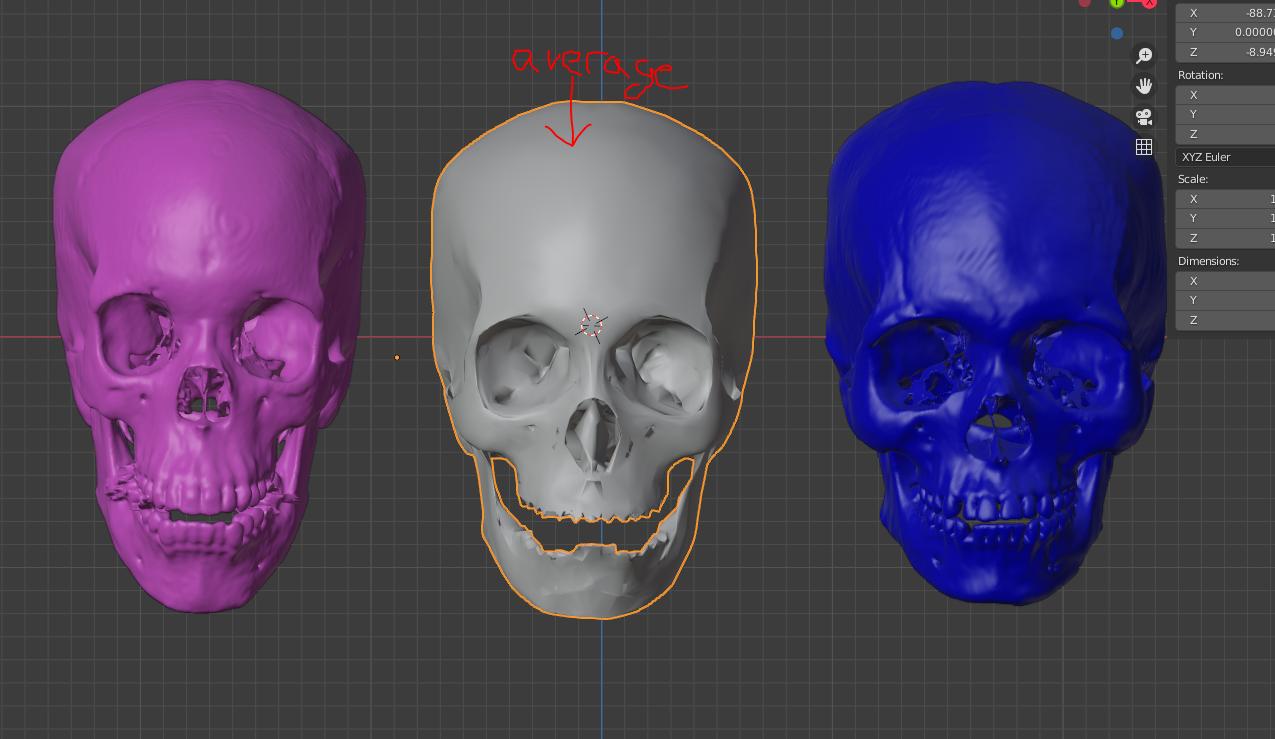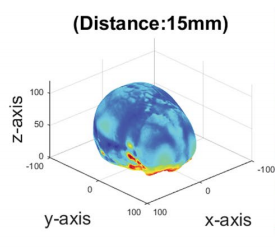This is a continuation of this question, and then this question, but now I'm onto the next step of the puzzle.
To recap, I have two different skulls in Blender, that I created as .stl's in a program called 3dSlicer from real CT-Scan data. I started by wanting to "average" them, and get a shape that represents the average shape of the two. Similar to the work done in this paper.
My original question asked how I could do that, possibly using shapekeys. Nobody was able to answer that at the time, but I knew that step 1 would probably be to make each skull have the same number of faces. By using the answer from this question and "shrinkwrapping" a skull shaped object around each skull, I was able to finally accomplish my original goal. Pictured here:

It still needs some work as far as making sure I correctly shrinkwrap each skull to begin with, which will make my finished product look a little better, but at least the process works.
The process was:
- Shrinkwrap each skull with a "skull-like" mesh that had an identical number of faces
- Take these new skulls (the shrinkwrapped mesh) and use shapekeys to morph them halfway from one to the other.
So now my question is: I'm sure that some vertices move more than others during the morph. I would love to show that in a heat-map like way, similar to this:
I.e. vertices and faces that moved farther would be brighter, whereas faces that barely moved from one skull to another would be duller. Is this possible in Blender?

